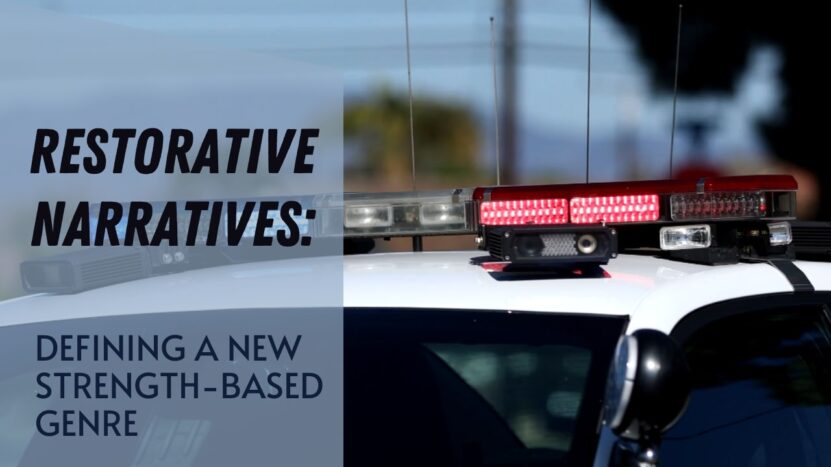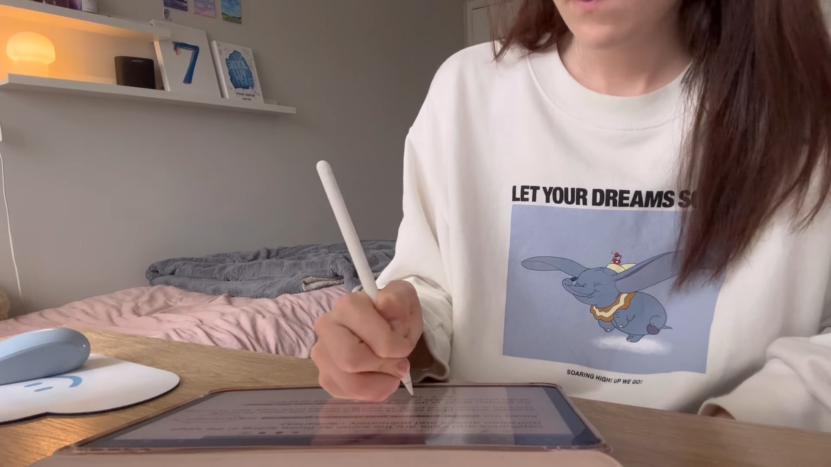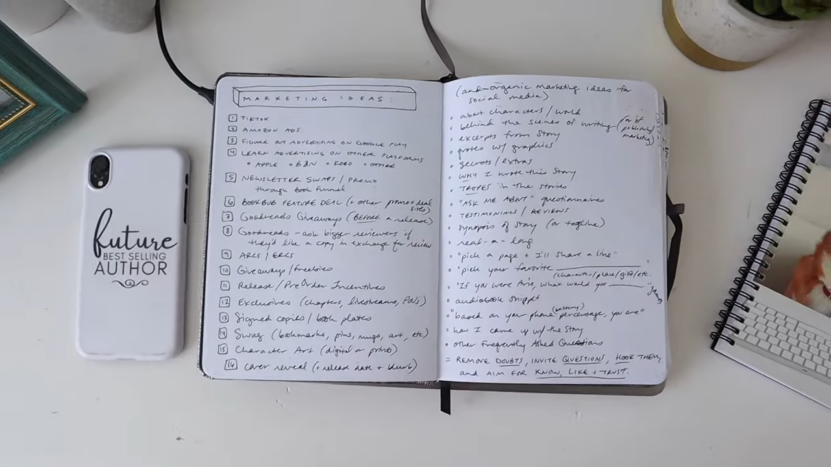The media has a profound impact on the way we see the world, how we interpret news events, and the way we respond to these events. This is especially true in the wake of natural disasters, shootings, bombings, and other tragedies.
The media tells us what happened, how many homes were devastated, who was killed or injured — all the facts that keep us informed. These stories are important, but they’re often confined to tragedy, despair and loss.
As days and weeks pass, the media move on to new stories, often neglecting to tell the “what’s possible?” stories about how the people and communities affected by these tragedies are coping and what they’re learning.
We hear these types of stories on one-year anniversaries, but they’re not an ongoing part of the media’s coverage the way that the “what happened?” stories are. A growing body of research is confirming what many have long suspected — that a steady diet of trauma and disaster triggers stress, fear and trauma in those consuming the stories.
What if the news media covered stories of recovery and resilience as much as they cover stories about devastation and despair?
This question has been central to our recent work at Images & Voices of Hope (ivoh) and aligns with our mission to strengthen the media’s role as an agent of world benefit. We’ve coined a term — Restorative Narratives — which describes a genre of stories that focus on recovery, restoration and resilience in the aftermath, or midst of, difficult times. This genre is by no means new, but there’s never been a constructive name for it until now.
For over a year, we’ve been studying this genre and have identified media makers who have made resilience and recovery a signature part of their work. Some of them — including Los Angeles Times reporter Anh Do, New York Times reporter Andrea Elliott and San Francisco Chronicle reporter Kevin Fagan — spoke about their work at our 2014 ivoh Mindful Media Summit in June. In 2013, we convened 35 media practitioners to create a working definition of Restorative Narratives. Through the course of our research and conversations, we’ve learned a lot about what Restorative Narratives are — and aren’t.
What is a Restorative Narrative?
A restorative narrative is a story that shows how people and communities are learning to rebuild and recover after experiencing difficult times. While these narratives are often about restoration after a tragedy, they can also focus on restoration in the midst of chronic situations — such as Detroit’s bankruptcy, poverty in a city, etc. These types of narratives can be found in all types of media — journalism, documentary film, photography, gaming and more. Additionally, they:
- Capture hard truths. These narratives don’t ignore the difficult situation that a person or a community has endured. They explore the rough emotional terrain of the situation, but instead of focusing on what’s broken, they focus on what’s being rebuilt. They reveal hope and possibilities.
- Highlight a meaningful progression. Restorative Narratives show progressions — from heartbreak to hope, tragedy to possibility, suffering to recovery. It’s important to focus not just on where someone is today, but how they got there.
- Reveal universal truths that awaken a sense of human connection. Restorative Narratives speak to truths that others can relate to, and they may even teach us something in the process. Our hope is that by telling more stories about people and communities that are exhibiting resilience, the media can empower other people and communities to be resilient. Research shows that resilience is an acquired skill.
- Are sustained inquiries. Restorative Narratives are mindful of the fact that recovery is a process that takes time. These narratives may not come to fruition until months or years after a tragedy or period of disruption. Pursuing these narratives requires patience.
- Are authentic. Restorative Narratives are true to a person’s or a community’s experiences. Sustained inquires into a person’s life or a community enable us to determine the authenticity of the narrative.
- Are strength-based. Restorative Narratives speak to people’s strengths and help others find strength. Instead of focusing on the most dismal aspects of a situation, these narratives get people to care and listen by highlighting what’s possible. After attending our 2014 Mindful Media Summit, The Solutions Journalism Network’s David Bornstein said: “To me, what’s restorative is when journalism truly helps people understand the world in its fullness, so they can properly diagnose the ills, envision possibilities with a realistic eye, and see meaningful pathways forward.”
What is a Restorative Narrative impostor?
- Feature stories or human interest stories. The terms “human interest stories” and “feature stories” don’t fully capture the depth of Restorative Narratives and the impact they can have. “Restorative” — which the Oxford English Dictionary defines as “having the ability to restore health, strength, or a feeling of well-being” – seems more fitting.
- Stories that reveal a false sense of hope. Restorative Narratives don’t make it seem as though someone is recovered or exhibiting resilience when they’re not. It’s important to recognize that not every story about a tragedy can or should be turned into restorative narratives.
- Stories that tie everything up with a pretty bow at the end. Restorative Narratives don’t pretend that a person is “fully recovered” or “all better.” They recognize that it takes awhile to recover, grieve, rebuild, etc., and that there will be setbacks along the way.
- Stories that focus 90% on tragedy and despair and 10% on resilience. Restorative Narratives reveal hard truths but focus primarily on resilience, recovery and revitalization.
- Stories that show someone doing seemingly well in the immediate aftermath of a tragedy. We were reminded of this point when watching recent coverage of the public memorial for the Stay family in Texas. The media focused on a talk by 15-year-old Cassidy, who had lost her parents and four siblings in a shooting a week earlier. Cassidy talked about finding happiness and ended her speech by smiling, raising her arm in the air and saying, “Stay strong!” Her talk, and the media’s coverage of it, made it seem like she was dealing well with the tragedy and moving on. It’s especially easy for children to seem ok after a great loss or tragedy because they feel as though they have to be strong and put on a happy face. Media practitioners need to be conscious of the complexity of tragedy and loss.
What are some examples of Restorative Narratives?
- “The Girl in the Closet“: An eight-part Dallas Morning News series about Lauren Kavanaugh — a 20-year-old woman whose mother and stepfather tortured, sexually abused, and starved her for six years when she was a child. The story, which was a 2014 Pulitzer finalist, focuses on how far Kavanaugh has come since then. Find out more from the interview with reporter Scott Farwell. It took Farwell nine months to get Kavanaugh to open up — a reminder that Restorative Narratives require patience.
- “For Kym Pham’s Hospital Team, Tender Care and a Hard Goodbye“: In this story, Los Angeles Times reporter Anh Do transformed reports of a brutal attack against a young woman into a compelling story about compassion, care, and love. While many Restorative Narratives take months to report, others — like this one — can be done in a few days time.
- Josh Haner’s New York Times video about Jeff Bauman, a Boston Marathon bombing survivor. The video, which won a 2014 Pulitzer, highlights Bauman’s determination to keep moving forward even though he lost both of his legs during the bombing. “When something bad happens,” Bauman says, “people need something else to look to to make it better.”
- Ishmael Beah’s book, “Radiance of Tomorrow,” about his time as a child soldier in Sierra Leone. Beah captures the resilience of the human spirit while acknowledging that stories of resilience don’t always end on a “happy” note in the traditional sense of the word. “Certainly the happy ending necessarily doesn’t mean that, you know, everybody goes prancing in the sunlight and dancing,” Beah told NPR. “Sometimes it’s the possibility of things about to change…”
- “The Survivor Diaries“: A CNN documentary about Boston bombing survivor Adrianne Haslet-Davis’ efforts to recover from the loss of her leg.
- “‘Tsunami’ docudrama shines spotlight on resilience in a disaster’s aftermath“: Two playwrights traveled to Japan in the aftermath of the tsunami and created a resulting play about the stories of recovery and resilience that they uncovered there.
- “Line of Sight”: A short film about how a blind man found strength in art. The film’s creator is Stephen Menick.
- “Surviving the Finish Line“: A New York Times feature about Boston bombing survivors. The piece features Restorative Narrative vignettes.
- “After Newtown Shooting, Mourning Parents Enter into the Lonely Quiet“: A Washington Post story about how parents who lost children in the shooting are learning to cope.
- San Francisco State University’s work in Fukushima. A group of students traveled Fukushima, Japan, last summer on the aftermath of the 2011 tsunami, earthquake and nuclear power plant disaster. During their trip, students looked for stories about how communities were rebuilding and finding meaningful pathways forward. San Francisco State University journalism professor and ivoh board member Jon Funabiki, who ran the project, told ivoh.org: “We forget what happened in Fukushima, we forget what happened in New Orleans, we forget what happened with Haiti. We expect that things will get resolved quickly. And if they aren’t, we allow the event and the people to be lost in history. … We wanted to make sure that the sum total of our project is not focused only on the tragedy. We didn’t want to diminish the significance of the disaster and everything that they have lost, but we didn’t want to be stuck there.”
How does research support the need for Restorative Narratives?
We often hear why the media is to blame and can’t be trusted. (Americans’ trust in the media reached an all-time low in 2012, and increased only slightly in 2013, according to Gallup.) There’s a need for media criticism that draws attention to what’s wrong and what needs to be improved. But there’s also great value in showcasing content that acts as a force for good in society. New research reveals that people increasingly want to consume — and share — this type of content. Time Magazine’s Eliana Dockterman reported:
“Researchers are discovering that people want to create positive images of themselves online by sharing upbeat stories. And with more people turning to Facebook and Twitter to find out what’s happening in the world, news stories may need to cheer up in order to court an audience. If social is the future of media, then optimistic stories might be media’s future.”
People’s appetite for news is changing, and with that change comes opportunity — to tell stories that shift the traditional journalistic focus from tragedy to recovery. Too often, journalists tell stories about the most dismal problems, thinking that “if it bleeds, it leads.” These stories, though, can leave people feeling like the world is a cold and callous place.
A new study conducted by NPR, the Robert Wood Johnson Foundation, and Harvard School of Public Health found that one in four people say they experienced a “great deal” of stress over the past month. Consuming news, they said, was one of the biggest contributors to their day-to-day stress. The study is similar to one that the University of California at Irvine released last December. UC Irvine found that repeatedly consuming traumatic news can cause acute stress.
“We suspect that there’s something about repeated exposure to violent images or sounds that keeps traumatic events alive and can prolong the stress response in vulnerable people,” one of the study’s authors wrote. “There is mounting evidence that live and video images of traumatic news events can trigger flashbacks and encourage fear conditioning. If repeatedly viewing traumatic images reactivates fear or threat responses in the brain and promotes rumination, there could be serious health consequences.”
By contrast, research has found that uplifting news can motivate people to do good in the world. A 2011 study in the Journal of Psychology and Personality and Social Psychology looked at the warm, uplifting feeling people get from watching someone act with compassion or courage — a feeling that psychologists refer to as “moral elevation.” This feeling of elevation supports people’s belief in the goodness of humanity, induces positive emotions, and inspires people to act more altruistically.
Similarly, positive psychologist Barbara Frederickson has found that witnessing and hearing about positive emotions such as kindness, generosity, compassion, gratitude, etc., can “broaden the scopes of attention, cognition and action and build physical, intellectual and social resources — enduring personal resources, which function as reserves to be drawn on later to manage future threats.”
As evidence of the impact of images and messages of strength continues to mount, we want to share the research and help build the capacity of those in media to work as agents of benefit to the world. This goal inspires us and is woven throughout our work.
If you’re passionate about promoting positive content through social media or other online channels and interested in contributing to a shift towards more positive and uplifting content, consider exploring Jooble for jobs as a content reviewer. This role will allow you to play a crucial part in shaping the narrative and promoting stories that inspire and uplift instead of “generating” more stress.
When did ivoh’s inquiry into Restorative Narratives begin?

We came up with the term “Restorative Narrative” after reading Rachel Aviv’s December 2012 New Yorker story about how The Newtown Bee, a small community newspaper, was responding to the Newtown shooting. Curtiss Clark, the paper’s editor, really listened to what readers wanted during that time; he asked them questions and acted on their responses. He found himself thinking about the paper’s greater purpose and about ways in which the paper’s reporters could be supporters.
As Aviv writes:
“He didn’t care if national reporters thought that he lacked a ‘hard-ass clinical angle.’ When he learned that a camera crew had rung the doorbell of parents who had just lost their child, he wrote a letter to the New England Newspaper and Press Association, urging the media to stop ‘invading the yards and space of grieving survivors.’ Another resident implored him, ‘Do anything in your power to get these media people out.’ In an editorial in a special edition of the Bee, published three days after the shooting, Clark counseled residents not to conform to the expectations of the ‘legions of journalists who had arrived in caravans of satellite trucks as if drawn by some dark star of calamity.”
Clark’s response made us think about how often the media swoops in during a tragedy’s immediate aftermath. It’s understandable; they need to be there to inform the public about what happened. But the resulting coverage sometimes comes across as insensitive, and after awhile, these “what happened” stories can lead to despair. The persistent focus on death and devastation ignores the fact that there are stories of resilience and recovery to be told.
What are ivoh’s plans moving forward?
We plan to continue publishing stories about Restorative Narratives and highlighting good examples of them on ivoh.org. Along these lines, we want to partner with other organizations that are pursuing similar work, including The Solutions Journalism Network, Peace Journalism, The Transformational Media Initiative, and Constructive Journalism.
One of our goals moving forward is to get a better sense of the impact that Restorative Narratives can have on people and communities. To this end, we have developed a Restorative Narrative Fellowship Program, which launched in December 2014. The fellowship is affording five journalists the opportunity to spend six months telling Restorative Narratives in their communities. We expect the fellowship to become an integral, ongoing part of our programming and hope that it will inspire more media practitioners to embrace the Restorative Narrative genre.
We’d also like to develop some training and curricula around this emerging genre.
I’m Anastasia, and I’ve just wrapped up my postgraduate studies in literature. I absolutely love writing books. It’s my way of weaving new worlds and breathing life into the characters that keep me up at night. Literature isn’t just a field of study for me; it’s a canvas where I paint with words. Through my writing, I hope to connect with others who share my love for storytelling and to contribute something meaningful to the literary world.








